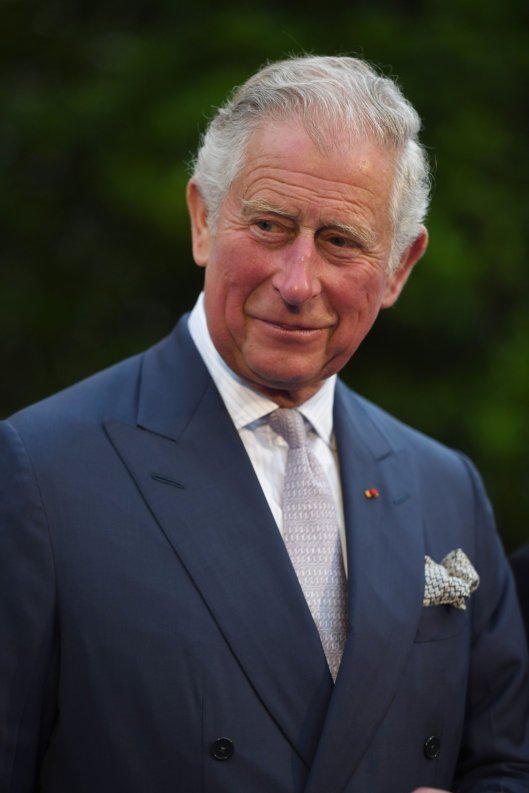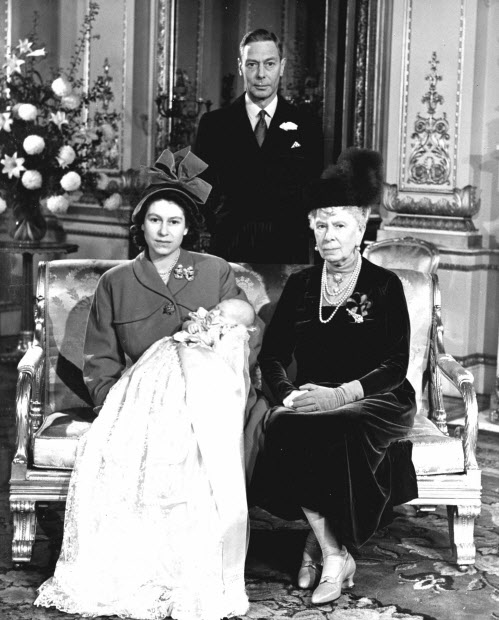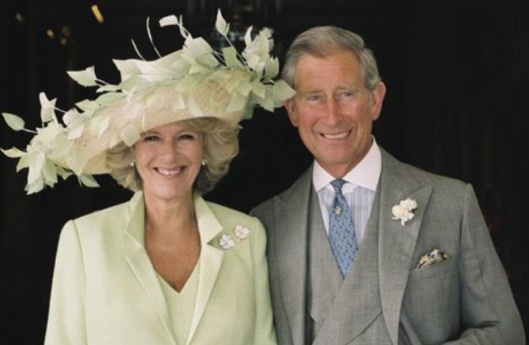Tags
Duke of Edinburgh, Happy Birthday, King Charles III of the United Kingdom, Prince Charles of the United Kingdom, Prince of Wales, Prince Philippe of Greece and Denmark, Prince William, Queen Elizabeth II of the United Kingdom
Happy 75th birthday to His Majesty the King!
Charles III (Charles Philip Arthur George; born November 14, 1948) is King of the United Kingdom and the 14 other Commonwealth realms.
Charles was born at 21:14 (GMT) on November 14, 1948, in Buckingham Palace during the reign of his maternal grandfather, King George VI of the United Kingdom. He was the first child of Princess Elizabeth, Duchess of Edinburgh (later Queen Elizabeth II of the United Kingdom), and Prince Philip of Greece and Denmark (Mountbatten), Duke of Edinburgh.
One month prior to his birth, King George VI had issued Letters Patent allowing Princess Elizabeth’s children to use the style and title of a Royal Prince or Princess of the United Kingdom. According to the Latter’s Patent of 1917 the style and title of Prince or Princess did not pass through the female line.
Therefore, without the Letters Patent, the children of the Duke and Duchess of Edinburgh would have been entitled to their father’s titles not their mothers titles. The Duke of Edinburgh was no longer a Royal Prince (even if he had maintained his title of Prince, he was a Prince of Greece and Denmark and not a Prince of the United Kingdom) so the children would have been born without a Royal British title but instead British aristocratic titles stemming from their father.
These Letters Patent only effected Charles and Anne because they were born prior to thier mother becoming Queen. Once Princess Elizabeth became Queen it rendered the Letters Patent a moot point because the later born children, being the children of the sovereign, they would automatically be a Prince or Princess of the United Kingdom.
The Duke and Duchess of Edinburgh had three more children after Charles; Anne (born 1950), Andrew (born 1960) and Edward (born 1964). On December 15, 1948, at four weeks old, he was christened Charles Philip Arthur George in the Music Room of Buckingham Palace by the Archbishop of Canterbury, Geoffrey Fisher.
King George VI of the United Kingdom died on February 6, 1952 and Charles’s mother acceded to the throne as Queen Elizabeth II of the United Kingdom. Prince Charles immediately became the heir apparent.
Under a charter of King Edward III of England in 1337, and as the monarch’s eldest son, Prince Charles automatically assumed the traditional titles of Duke of Cornwall and, in the Scottish peerage, the titles Duke of Rothesay, Earl of Carrick, Baron of Renfrew, Lord of the Isles, and Prince and Great Steward of Scotland. On June 2, the following year, Charles attended his mother’s coronation at Westminster Abbey.
Prince Charles was created Prince of Wales and Earl of Chester in 1958 and his investiture of the titles was held in 1969, when he was crowned by his mother in a televised ceremony held at Caernarfon Castle; the investiture was controversial in Wales owing to growing Welsh nationalist sentiment. He took his seat in the House of Lords the following year and he delivered his maiden speech on June 13, 1974, the first royal to speak from the floor of the House of Lords since the future King Edward VII in 1884. He spoke again in 1975.
He was educated at Cheam School and Gordonstoun, and later spent six months at the Timbertop campus of Geelong Grammar School in Victoria, Australia. After earning a history degree from the University of Cambridge, Charles served in the Royal Air Force and the Royal Navy from 1971 to 1976.
In 1981, he married Lady Diana Spencer, the fourth of five children of John Spencer, Earl Spencer (1924–1992), and Frances Spencer, Countess Spencer (née Roche; 1936–2004). She was delivered at Park House, Sandringham, Norfolk. The Spencer family had been closely allied with the British royal family for several generations; her grandmothers, Cynthia Spencer, Countess Spencer, and Ruth Roche, Baroness Fermoy, had served as ladies-in-waiting to Queen Elizabeth, the Queen Mother.
They had two sons, Prince William (Duke of Cambridge and current Prince of Wales) and Prince Henry (Harry), Duke of Sussex. Charles and Diana divorced in 1996, after they had each engaged in well-publicised extramarital affairs. Diana died as a result of injuries sustained in a car crash the following year. In 2005, Charles married his long-term partner, Camilla Parker Bowles.
The Kings grandchildren are:
Prince George of Wales (3rd in line to the throne)
Princess Charlotte of Wales
Prince Louis of Wales
Prince Archie of Sussex, Earl of Dumbarton
Princess Lilibet of Sussex
As heir apparent, Charles undertook official duties and engagements on behalf of his mother. He founded the Prince’s Trust in 1976, sponsored the Prince’s Charities, and became patron or president of more than 800 other charities and organisations. He advocated for the conservation of historic buildings and the importance of architecture in society.
In that vein, he generated the experimental new town of Poundbury. An environmentalist, Charles supported organic farming and action to prevent climate change during his time as the manager of the Duchy of Cornwall estates, earning him awards and recognition as well as criticism; he is also a prominent critic of the adoption of genetically modified food, while his support for alternative medicine has been criticised. He has authored or co-authored 17 books.
Prince Charles became King Charles III of the United Kingdom upon his mother’s death on September 8, 2022. At the age of 73, he became the oldest person to accede to the British throne, after having been the longest-serving heir apparent and Prince of Wales in British history. His coronation took place at Westminster Abbey on May 6, 2023.













































 Princess Madeleine of Sweden, Duchess of Hälsingland and Gästrikland (Madeleine Thérèse Amelie Josephine; born 10 June 1982), is the second daughter and youngest child of King Carl XVI Gustaf and Queen Silvia. Upon her birth, she was third in line of succession to the Swedish throne. She is currently seventh in the line of succession. Princess Madeleine is married to British-American financier Christopher O’Neill. They have three children, Princess Leonore, Prince Nicolas and Princess Adrienne.
Princess Madeleine of Sweden, Duchess of Hälsingland and Gästrikland (Madeleine Thérèse Amelie Josephine; born 10 June 1982), is the second daughter and youngest child of King Carl XVI Gustaf and Queen Silvia. Upon her birth, she was third in line of succession to the Swedish throne. She is currently seventh in the line of succession. Princess Madeleine is married to British-American financier Christopher O’Neill. They have three children, Princess Leonore, Prince Nicolas and Princess Adrienne.





